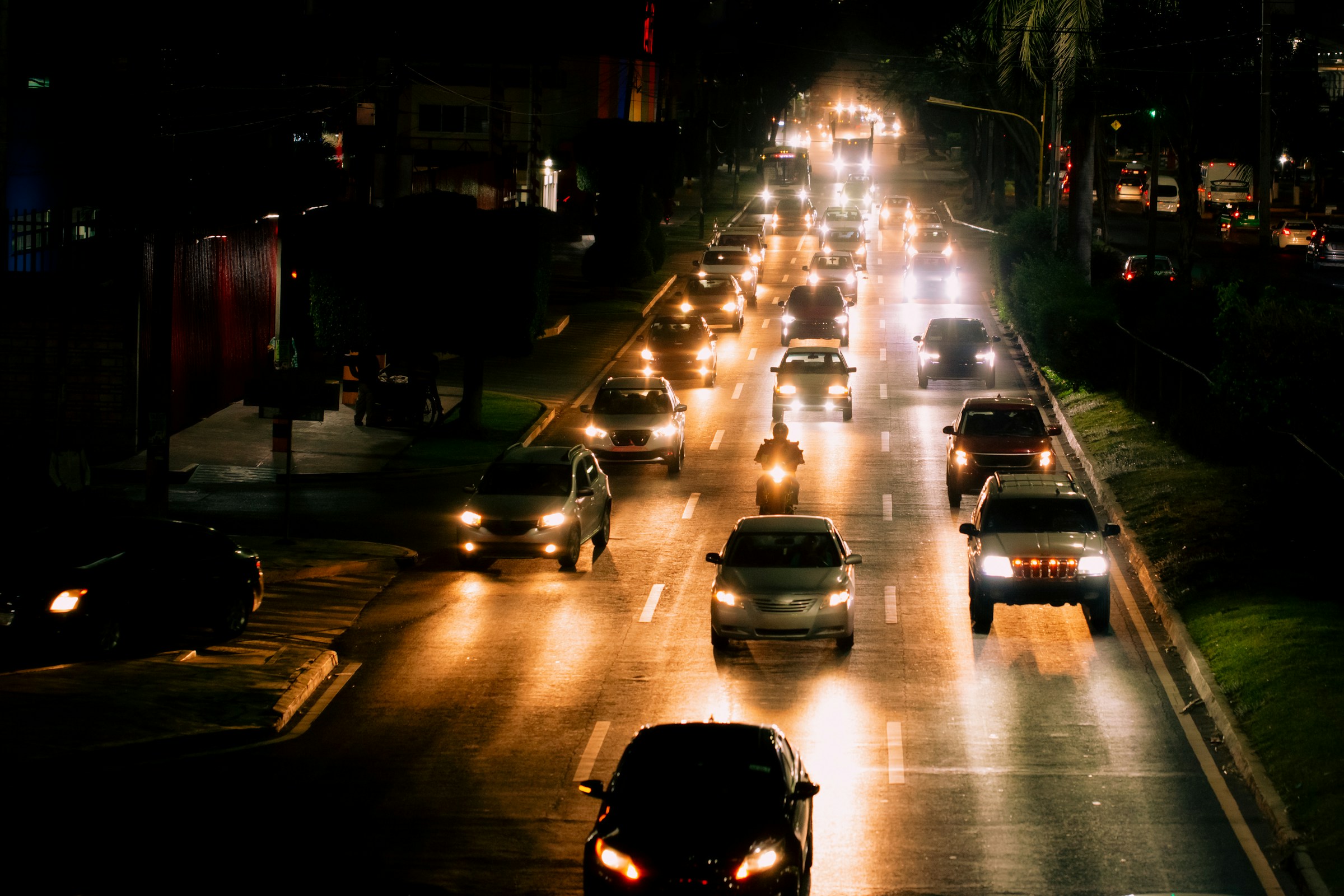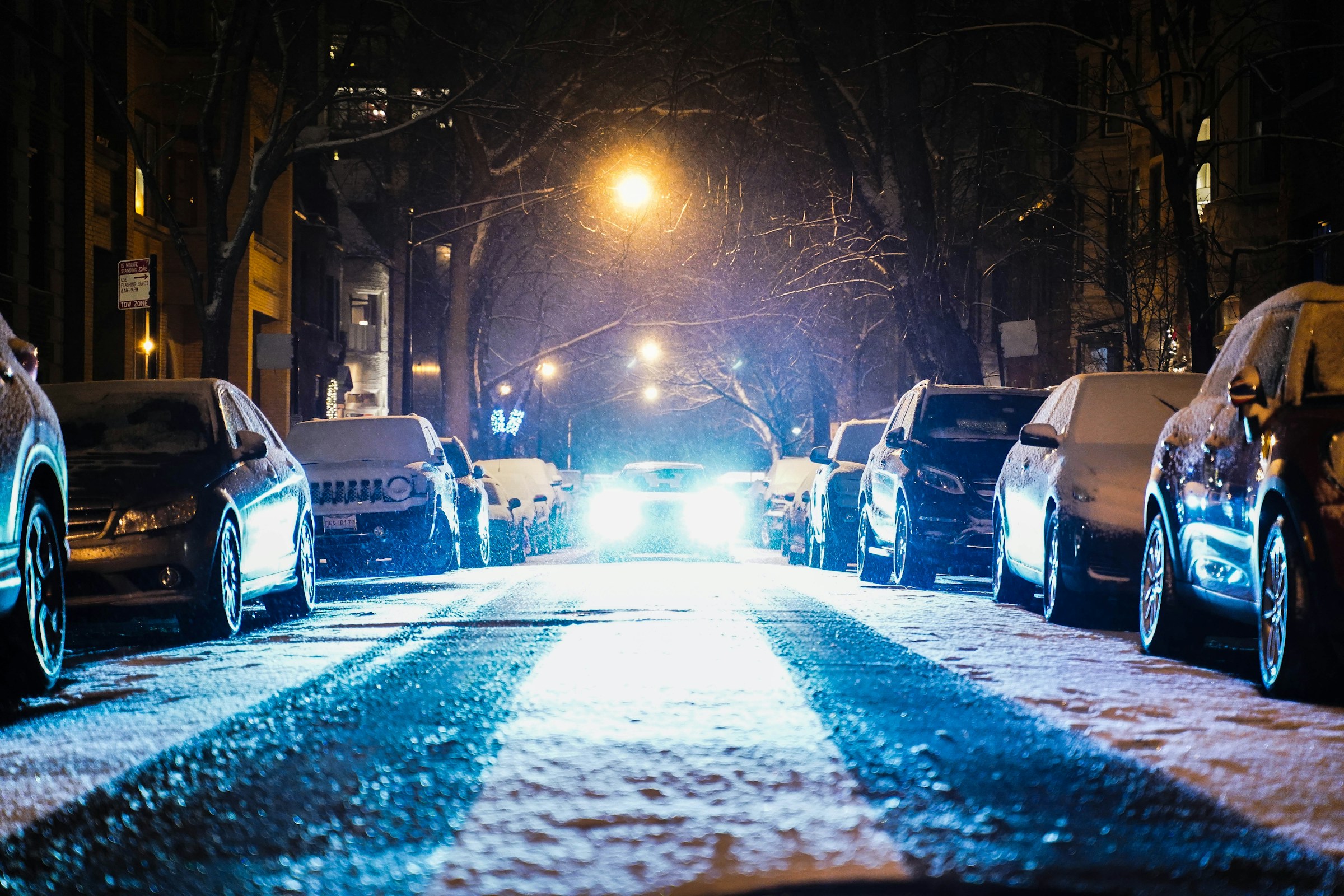Driving at night is often necessary when you work long hours or want to enjoy going out for the evening. While you can also get into a car accident during the day, you face an increased risk of experiencing a collision once the sun goes down. In fact, 78% of pedestrian fatalities after a vehicle collision occurred at night compared to only 19% happening during the daylight hours. Knowing the most common challenges associated with driving at night and how to overcome them helps you avoid being part of these statistics.

Learn How to Cope with Headlight Glare
Staring into oncoming headlights is more than just uncomfortable. Too much glare could cause you to be temporarily blinded, which leads to accidents. Try to avoid looking closely at oncoming traffic. If you experience headlight glare, then try to look down and toward the right of your vehicle.
As you do, you can use the white line on the side of the road to help guide your path down the lane. Usually, it only takes a second or two for the moment to pass. People with cataracts or astigmatism may need to consult with their optometrist to find treatments that help reduce halos and stars around lights that obscure their vision.
Watch Out for Wildlife and Pedestrians
Between the glare of lights and the darkness, it is hard to see wildlife or people who might veer into your driving path. Always scan the road during dusk and the early evening hours for wildlife that could be on the side of the road. Seeing a flash of light from an animal’s eyes is a clear sign that you might need to adjust your speed.
You can also prevent pedestrian collisions by using extra caution at intersections and crosswalks where you know people might be crossing the road. Following the speed limit helps you be able to respond in enough time if you do spot someone in the intersection. Making sure your vehicle has working lights also helps the other person see you coming.

Look for Potential Impaired Drivers
You might have gotten enough sleep and opted to skip alcoholic beverages during your night out, but not everyone makes the same decisions. If you spot someone swerving or driving in other erratic ways, then it’s best to steer away from them when it’s safe to do so. When the driver is behind you, this could mean pulling off the road and allowing them to pass.
Make sure to avoid honking or doing anything else that could agitate the situation. If you have someone in the vehicle with you, then they can also call emergency services to report the incident when the driver is putting other people’s safety at risk.
Avoid Driving While Fatigued
In a recent study, it was found that 17.6% of fatal crashes involved a driver who was admittedly drowsy. If you know you will be driving at night, then try to get at least seven to eight hours of sleep the night before. For overnight drives, this could mean sleeping for a portion of the day to make sure you are alert. Be aware of the signs of drowsy driving, including yawning, drifting between lanes, missing exits and trouble keeping your eyes and head up. If you experience any of these while behind the wheel, find a safe place to pull over and rest.
Treating being drowsy with the same caution as being intoxicated could also save you from an accident. Asking someone else to drive is always a good choice when you haven’t had enough sleep to focus on the road.
Taking a few simple precautions can help you avoid falling prey to common hazards that lead to collisions. You will also want to make sure that you are always prepared to handle an accident if one occurs. Keeping a first aid kit in your car and storing the contact information for an attorney in your phone can help you quickly begin the process of recovering from a nighttime car accident when time is of the essence for maintaining everyone’s safety.
Article Last Updated: November 6, 2025.
